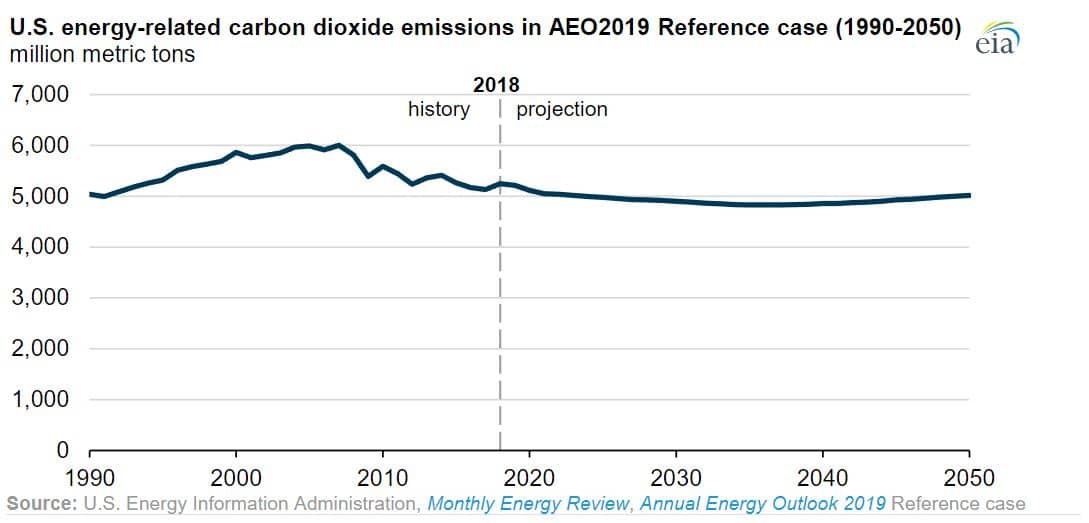U.S. Energy-Related Emissions to Remain Flat Through 2050: EIA

U.S. energy-related emissions of carbon dioxide (CO2) will remain largely unchanged through mid-century, according to projections in the Energy Information Administration’s Annual Energy Outlook 2019.
- Assuming no changes to current laws and regulations, the agency projects that carbon dioxide emissions will be 5,019 million metric tons in 2050, or 4% below their 2018 value, as emissions associated with coal and petroleum consumption fall and emissions from natural gas consumption rise.
- Although natural gas made up the smallest portion of U.S. energy-related CO2 emissions for decades, booming use of the relatively clean-burning fossil fuel for electricity generation made it surpass coal in 2015. With the shale revolution in full swing and no sign of natural gas prices recovering, the fossil fuel’s contribution to overall CO2 emissions is likely to keep increasing.
- In the same projection, the agency assumes that nearly one-third of the existing coal-fired electricity generating capacity retires within the next decade, while the surviving fleet is used more often, meaning coal’s projected decline in electricity generation is less than the capacity retirements would suggest.
- The Fourth National Climate Assessment report and the latest U.N. Intergovernmental Panel on Climate Change report both concluded that global warming could have catastrophic effects sooner than previously thought unless net-zero global emissions are achieved by 2050. CO2 is one of the major air pollutants contributing to the escalating greenhouse effect and the resulting change in climate.
EnerKnol Pulses like this one are powered by the EnerKnol Platform—the first comprehensive database for real-time energy policy tracking. Sign up for a free trial below for access to key regulatory data and deep industry insights across the energy spectrum.
ACCESS FREE TRIAL